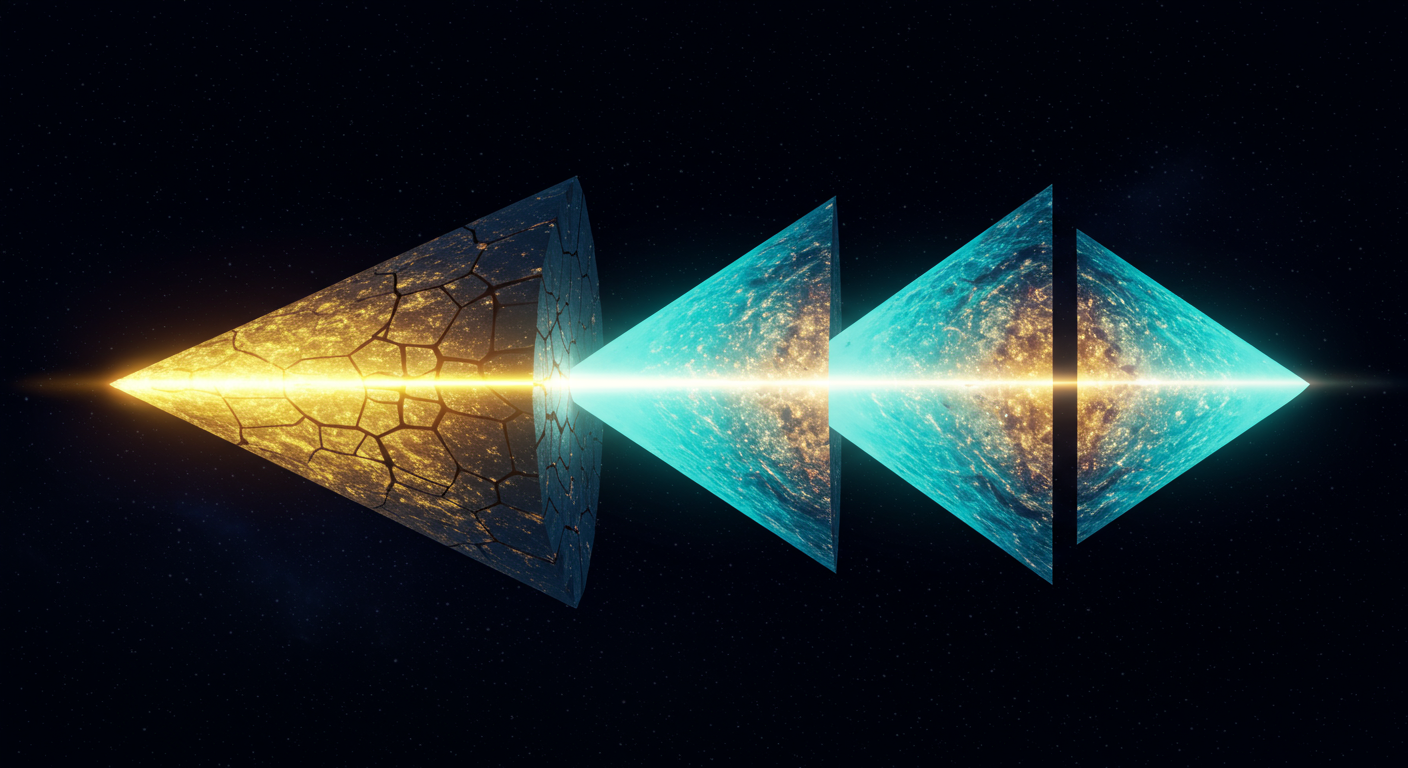Quantifying the global parameter tensions between ACT, SPT and Planck

In a detailed statistical analysis, Quantifying the global parameter tensions between ACT, SPT and Planck (2007.08496), our group leader Will Handley and collaborator Pablo Lemos explore the consistency of the world’s leading Cosmic Microwave Background (CMB) datasets. As cosmological measurements have entered an era of high precision, subtle but persistent disagreements have emerged, challenging the completeness of the standard $\Lambda$CDM model. This work provides a rigorous framework for evaluating these discrepancies.
The Challenge of Cosmological Tensions
The standard model of cosmology, $\Lambda$CDM, has been remarkably successful, but its foundation is being tested by increasingly powerful experiments. While the “Hubble tension” between early and late-universe measurements of the expansion rate is the most famous example (e.g., 10.3847/1538-4357/ab1422), other tensions exist within different probes of the cosmos. This paper focuses on the cornerstone of modern cosmology: the CMB. By comparing data from the Planck satellite, the Atacama Cosmology Telescope (ACT), and the South Pole Telescope (SPT), we can ask a fundamental question: do these independent measurements tell the same story about our universe? Answering this requires moving beyond simple comparisons of individual parameters and assessing the agreement of the full, high-dimensional parameter spaces.
A Robust Metric: The Suspiciousness Statistic
To quantify the disagreement between these complex datasets, this analysis utilizes the Suspiciousness statistic. This metric, first introduced by Will Handley and Pablo Lemos in an earlier work (10.1103/PhysRevD.100.043504), provides a powerful and principled way to perform a global comparison. Key advantages of this method include:
- Prior Independence: Unlike the standard Bayesian evidence ratio, the Suspiciousness is insensitive to the arbitrary widths of uninformative priors commonly used in cosmological analyses.
- Global Assessment: It synthesizes the entire multi-dimensional posterior distributions into a single, intuitive statistic, avoiding the pitfalls of focusing on specific, potentially misleading, 1D or 2D parameter projections.
- Information Theoretic Grounding: The statistic is built from well-defined information-theoretic quantities, making it a robust and covariant measure of discordance.
This approach allows for a definitive quantification of whether two datasets are statistically consistent, in tension, or in outright conflict.
Findings and Implications
The paper applies this methodology to compare the latest data releases from ACT DR4, SPT, and the final Planck 2018 results (10.1051/0004-6361/201833910). The key findings reveal a pattern of mild-to-moderate tension centering on the newer ACT data:
- ACT vs. Planck: A tension of $2.6\sigma$.
- ACT vs. SPT: A tension of $2.4\sigma$.
- Planck vs. SPT: These two datasets are found to be consistent with each other.
- ACT vs. Planck+SPT: When comparing ACT against the combined, consistent Planck and SPT data, the tension increases to $2.8\sigma$.
While these values do not yet cross the threshold for a major discovery, a tension approaching $3\sigma$ is significant and warrants caution. It suggests that simply combining all available CMB datasets under the assumption of the $\Lambda$CDM model may be inappropriate and could wash out important physical clues. Whether the source of this tension is an unknown systematic effect in one of the experiments or, more excitingly, a hint of new physics, remains an open question. This work highlights the critical role of advanced Bayesian statistical methods in navigating the frontiers of cosmology and rigorously testing our most fundamental theories about the universe.

Content generated by gemini-2.5-pro using this prompt.
Image generated by imagen-3.0-generate-002 using this prompt.